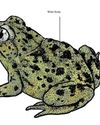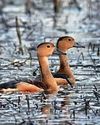How to fix our broken food system and stop its collateral damage on Nature
The world’s food system is broken...
An estimated 0.8 billion people still go to bed hungry, two billion people suff er from malnutrition. On the other hand, almost 1.9 billion people are overweight, of these, 0.7 billion are obese. Pesticides cause endocrine disruption, leading to widespread neurological ailments. Glyphosates, widely used as herbicides are causing cancer. Type-2 diabetes, a lifestyle disease related to our diets, now has over 400 million suff erers (four times the number in 1980) and the global cost of diabetes type 2 is more than 850 billion USD per year. Not surprisingly, the Global Nutrition Report 2016 states that “Diet is now the number-one risk factor for the global burden of disease.” Furthermore, food systems globally are now the source of 60 per cent of terrestrial biodiversity loss, 24 per cent of greenhouse gas emissions, 33 per cent of degraded soils and 61 per cent of commercial fi sh population depletion. Food systems consume over 80 per cent of our freshwater supply, and are the main reason why the planet’s vital rainforest cover is declining.
This broken food system severely damages Nature
Agri-commodities (palm oil, beef, soya, cash-crops) are now the largest direct drivers of nature loss on land, causing losses of forests and wetlands through continuing changes in land use, as well as through the damage caused by agrichemical inputs. Fossil fuels – through climate change eff ects on forests and wildlife and through ocean acidifi cation have the largest indirect impacts on nature. Deforestation in most biodiversity hotspots – from Brazil to Indonesia to Australia – is attributed to the expansion of conventional farming. Furthermore, leachates and run-off s from conventional farming pollute river systems and coastal waters and damage coral reefs.
This story is from the April 2019 edition of Sanctuary Asia.
Start your 7-day Magzter GOLD free trial to access thousands of curated premium stories, and 8,500+ magazines and newspapers.
Already a subscriber ? Sign In
This story is from the April 2019 edition of Sanctuary Asia.
Start your 7-day Magzter GOLD free trial to access thousands of curated premium stories, and 8,500+ magazines and newspapers.
Already a subscriber? Sign In

Why Children Are Needed To Help Save The World
On my very first day in India, I encountered many marvelous new customs not practiced in the United States, my home country. But the most curious by far involved trees. Here and there, alongside the roaring streets of Mumbai were rings of marigold wreathed around twisting banyan trunks like dried rays of afternoon sunlight…

Who's Who?
Fact: all toads are frogs, but not all frogs are toads! Let’s unpack this...

The Sea Raptor
The White-bellied Sea Eagle Haliaeetus leucogaster is one of the most common raptors along the Indian coastline. Nevertheless, the sight of this soaring, broad-winged, white and black bird of prey is nothing less than majestic

Earth Manners
Everyday habits matter! Let’s be kind to the planet, animals and ourselves!

You Never Know You Never Know What You Might Find In The You Might Find In The Mixed Bag
Rivers are India’s lifeblood. And protecting these rivers was Latha Anantha’s life’s mission.

Did U Know?
The male of my species is one flashy guy! I live in North American shrublands. Who am I?
A Sweet New Song!
Deciding whether two animals are the same or a different species frequently leads to debates among scientists. In Rote Island, Indonesia, researchers tried to find the differences between many pairs of closely related birds by simply asking the birds!

Return Of The Red Kites
Red Kites, slightly larger, redder versions of Asian Black Kites, are found across Europe. These birds were slaughtered in large numbers in the Middle Ages* in Britain, as they were considered pests.

To Save A King
On October 25, 2018, my friend Dr. Shilpa Penhayade came across a tiny bundle of feathers. A security guard had saved the resplendant Oriental Dwarf Kingfisher from stray dogs and crows at the District Hospital at Mapusa, Goa...

Fixing A BFO Bone!
On April 16, 2017, we received a call from a news reporter Sanjog Patil of Lokmat informing us that an unusual bird had been found injured by a farmer in Tambave.